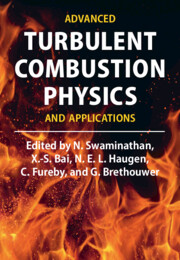97 results
Assessing social cognition in patients with schizophrenia and healthy controls using the reading the mind in the eyes test (RMET): a systematic review and meta-regression
-
- Journal:
- Psychological Medicine / Volume 54 / Issue 5 / April 2024
- Published online by Cambridge University Press:
- 04 January 2024, pp. 847-873
-
- Article
-
- You have access
- Open access
- HTML
- Export citation
Towards fast and accurate predictions of radio frequency power deposition and current profile via data-driven modelling: applications to lower hybrid current drive
- Part of
-
- Journal:
- Journal of Plasma Physics / Volume 88 / Issue 4 / August 2022
- Published online by Cambridge University Press:
- 18 August 2022, 895880401
-
- Article
-
- You have access
- Open access
- HTML
- Export citation
Acceleration of 60 MeV proton beams in the commissioning experiment of the SULF-10 PW laser
- Part of
-
- Journal:
- High Power Laser Science and Engineering / Volume 10 / 2022
- Published online by Cambridge University Press:
- 03 August 2022, e26
-
- Article
-
- You have access
- Open access
- HTML
- Export citation
1 - Introduction
-
-
- Book:
- Advanced Turbulent Combustion Physics and Applications
- Published online:
- 09 December 2021
- Print publication:
- 06 January 2022, pp 1-24
-
- Chapter
- Export citation
10 - Challenges in Practical Combustion
-
- Book:
- Advanced Turbulent Combustion Physics and Applications
- Published online:
- 09 December 2021
- Print publication:
- 06 January 2022, pp 396-459
-
- Chapter
- Export citation
2 - Turbulent Flame Structure and Dynamics: Combustion Regimes
-
-
- Book:
- Advanced Turbulent Combustion Physics and Applications
- Published online:
- 09 December 2021
- Print publication:
- 06 January 2022, pp 25-99
-
- Chapter
- Export citation
4 - Non-premixed and Partially Premixed Combustion Modeling
-
-
- Book:
- Advanced Turbulent Combustion Physics and Applications
- Published online:
- 09 December 2021
- Print publication:
- 06 January 2022, pp 162-199
-
- Chapter
- Export citation
3 - Premixed Combustion Modeling
-
-
- Book:
- Advanced Turbulent Combustion Physics and Applications
- Published online:
- 09 December 2021
- Print publication:
- 06 January 2022, pp 100-161
-
- Chapter
- Export citation
Index
-
- Book:
- Advanced Turbulent Combustion Physics and Applications
- Published online:
- 09 December 2021
- Print publication:
- 06 January 2022, pp 464-470
-
- Chapter
- Export citation
Contents
-
- Book:
- Advanced Turbulent Combustion Physics and Applications
- Published online:
- 09 December 2021
- Print publication:
- 06 January 2022, pp v-x
-
- Chapter
- Export citation
Preface
-
- Book:
- Advanced Turbulent Combustion Physics and Applications
- Published online:
- 09 December 2021
- Print publication:
- 06 January 2022, pp xiii-xiv
-
- Chapter
- Export citation
List of Contributors
-
- Book:
- Advanced Turbulent Combustion Physics and Applications
- Published online:
- 09 December 2021
- Print publication:
- 06 January 2022, pp xi-xii
-
- Chapter
- Export citation
11 - Closing Remarks
-
-
- Book:
- Advanced Turbulent Combustion Physics and Applications
- Published online:
- 09 December 2021
- Print publication:
- 06 January 2022, pp 460-463
-
- Chapter
- Export citation
Frontmatter
-
- Book:
- Advanced Turbulent Combustion Physics and Applications
- Published online:
- 09 December 2021
- Print publication:
- 06 January 2022, pp i-iv
-
- Chapter
- Export citation
Assessment of physician training and prediction of workforce needs in paediatric cardiac intensive care in the United States
-
- Journal:
- Cardiology in the Young / Volume 32 / Issue 11 / November 2022
- Published online by Cambridge University Press:
- 20 December 2021, pp. 1748-1753
-
- Article
- Export citation

Advanced Turbulent Combustion Physics and Applications
-
- Published online:
- 09 December 2021
- Print publication:
- 06 January 2022
Workforce demographics and unit structure in paediatric cardiac critical care in the United States
-
- Journal:
- Cardiology in the Young / Volume 32 / Issue 10 / October 2022
- Published online by Cambridge University Press:
- 03 December 2021, pp. 1628-1632
-
- Article
- Export citation
Numerical investigation of the breakup mode and trajectory of liquid jet in a gaseous crossflow at elevated conditions
-
- Journal:
- The Aeronautical Journal / Volume 125 / Issue 1291 / September 2021
- Published online by Cambridge University Press:
- 13 September 2021, pp. 1519-1541
-
- Article
- Export citation
Survival and predictors of deaths of patients hospitalised due to COVID-19 from a retrospective and multicentre cohort study in Brazil
-
- Journal:
- Epidemiology & Infection / Volume 148 / 2020
- Published online by Cambridge University Press:
- 07 September 2020, e198
-
- Article
-
- You have access
- Open access
- HTML
- Export citation
Energy acquisition of a small solar UAV using dynamic soaring
- Part of
-
- Journal:
- The Aeronautical Journal / Volume 125 / Issue 1283 / January 2021
- Published online by Cambridge University Press:
- 20 August 2020, pp. 60-86
-
- Article
- Export citation













